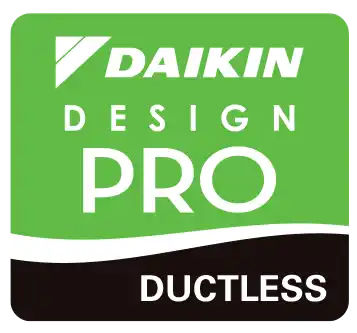Maintaining a clean and efficient HVAC system is crucial for any commercial building. One important aspect of this is regular air duct cleaning. Over time, dust, debris, and other contaminants can accumulate in the air ducts, reducing system efficiency and deteriorating indoor air quality. This can lead to increased energy costs and potential health issues for the building’s occupants.
Importance of Air Duct Cleaning in Commercial Buildings
Air duct cleaning is crucial for maintaining a healthy and efficient environment in commercial buildings. Over time, air ducts can accumulate dust, debris, mold, and other contaminants. These pollutants can circulate through the building, negatively impacting indoor air quality. Poor air quality can lead to respiratory issues, allergies, and other health problems for employees and visitors.
Dirty air ducts also make HVAC systems work harder, reducing their efficiency and increasing energy costs. When air ducts are clogged, the system has to expend more energy to maintain desired temperatures, leading to higher utility bills. Regular cleaning ensures that your HVAC system runs efficiently, saving on energy costs and reducing wear and tear on the system.
Moreover, clean air ducts contribute to a better working environment. Employees are more productive and comfortable in an environment with good air quality. Regular air duct cleaning can also prevent costly repairs and downtime by identifying and addressing issues before they escalate. Prioritizing air duct cleaning in commercial buildings ensures a healthier, safer, and more cost-effective environment for everyone.
How Our Professionals Conduct Thorough Air Duct Inspections
Thorough inspections are a critical first step in our air duct cleaning process. Our professionals begin by examining the entire HVAC system to identify any areas that need attention. This includes looking for dust and debris build-up, mold growth, and any signs of moisture or leaks that could lead to further problems.
We use advanced inspection tools, such as cameras and scopes, to get a detailed view of the ductwork’s interior. These tools allow our technicians to see hard-to-reach areas and ensure that no part of the system is overlooked. By identifying problem areas early, we can develop a targeted cleaning plan to address all issues comprehensively.
After the inspection, our professionals explain their findings and recommend the best course of action. We provide a clear and detailed plan for cleaning the air ducts, including the techniques and tools we will use. This transparency ensures that you understand the entire process and know what to expect. Trusting our experts to conduct thorough inspections ensures an effective and efficient cleaning process, resulting in a healthier and more efficient HVAC system for your commercial property.
Advanced Techniques and Tools Used in Air Duct Cleaning
Our professionals utilize advanced techniques and state-of-the-art tools to ensure thorough air duct cleaning. We employ powerful vacuums and brushes to remove dust, debris, and other contaminants from the ductwork. These high-efficiency vacuums create negative pressure, pulling contaminants from the ducts and ensuring they don’t re-enter the building’s air supply.
For more stubborn build-up, we use rotating brushes and compressed air tools. These mechanical brushes break loose any tough dirt and debris clinging to the duct walls. Compressed air tools then blow the loosened particles toward the vacuum system for removal. This combination of tools ensures that all surfaces within the ductwork are clean.
Additionally, we may use sanitizing agents to eliminate any microbial contaminants such as mold or bacteria. This step is crucial for maintaining a healthy indoor environment, especially in commercial buildings where air quality can affect many people. By employing these advanced techniques and tools, our technicians ensure that the cleaning process is comprehensive and effective.
Benefits of Regular Air Duct Maintenance for Commercial Properties
Regular air duct maintenance offers several benefits for commercial properties. First, it significantly improves indoor air quality by removing dust, pollen, and other allergens. Clean air contributes to a healthier work environment, which can lead to fewer employee health issues and increased productivity.
Second, regular maintenance enhances the efficiency of the HVAC system. Clean ducts allow air to flow more freely, reducing the system’s workload and energy consumption. This efficiency translates into cost savings on energy bills and an extended lifespan for the HVAC equipment. Regular maintenance also helps prevent unexpected breakdowns, which can be costly and disruptive to your business operations.
Lastly, routine air duct maintenance by our professionals ensures compliance with health and safety regulations. Commercial buildings must adhere to strict guidelines to ensure the safety and well-being of occupants. Regular inspections and cleanings help you stay compliant with these regulations, avoiding any potential fines or legal issues.
Conclusion
Regular air duct cleaning and maintenance are essential for maintaining a healthy and efficient commercial building. From inspections to advanced cleaning techniques, our professionals at Expert Heating, Air Conditioning & Plumbing ensure your HVAC system runs smoothly and provides clean air for your building’s occupants.
Clean air ducts mean better air quality, increased HVAC efficiency, and cost savings. By trusting our experts to handle your air duct cleaning needs, you can focus on your business operations without worrying about potential HVAC issues. We are committed to delivering the highest quality services to ensure your commercial property remains a safe and comfortable environment.
Contact us today to schedule your air duct cleaning service in Hinsdale and experience the benefits of a clean and efficient HVAC system.










